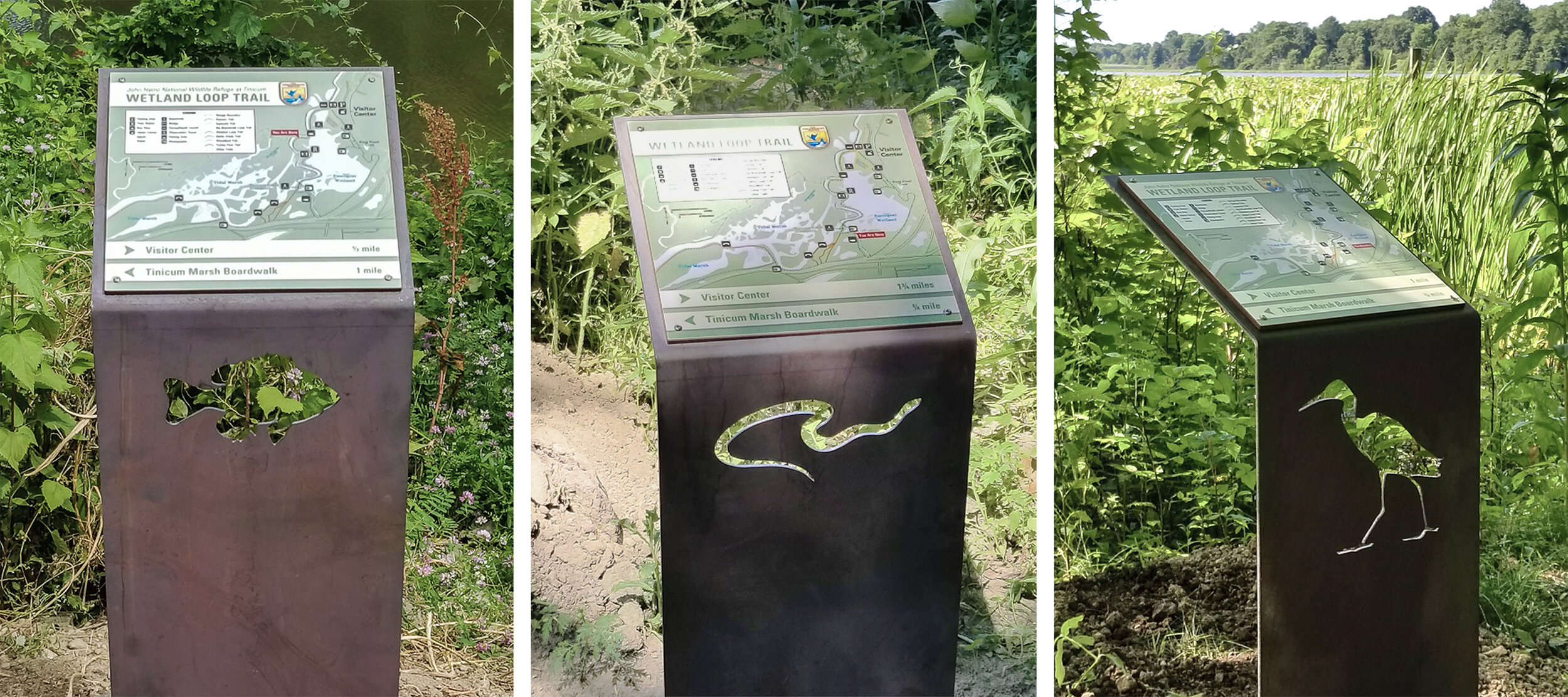
Johns Heinz National Wildlife Refuge
“America’s First Urban Refuge”, John Heinz National Wildlife Refuge is located in Philadelphia and was founded to preserve the Tinicum Marsh. As a senior designer on the graphics team at Formations, I worked within an established style guide to develop a large portion of the graphic layouts for the Visitor Center as well as surrounding outdoor signage.

Because the proximity to the city of Philadelphia is such an integral feature of the refuge; an oversized map of the area serves as a centerpiece to the exhibits. Using aerial imagery, I created a custom map highlighting points of interest in the region.

The map is built in a modular grid so that it can be updated; flag labels can also be added or removed as needed. The refuge itself is elevated on the map in order to draw attention and help orient visitors.


This area demonstrates the huge impact that the tides have on the Tinucum Marsh by letting visitors scroll back and forth between high and low tide on the monitor. The map on the left shows the flow of the ocean waters as the make their way to and from the refuge.

Photos and dioramas are carefully integrated to create an immersive scene of the refuge.

A custom-built globe shows the migration patterns of birds, letting visitors see that the refuge is a major stopover location.

The Philadelphia skyline is clearly visible from John Heinz and its silhouette was used as a major design component throughout the exhibits.



This three-sided outdoor welcome structure includes layers of cut metal and graphic panels that introduce the refuge. Maps of the refuge itself as well as the surrounding community help locate and direct visitors.

Small way-finding panels along the trails of the refuge use a map with “You Are Here” indicators as well as mileage markers to help guide hikers. Panels are mounted to custom-shaped Corten Steel stanchions with silhouettes of local wildlife cut into the vertical surface.

In addition to the way-finding elements, I designed interpretive panels that are place long the trails and walkways of the refuge. These panels help guide viewers along their way as well as providing information about the specific part of the refuge that they are passing through.

This panels demonstrates the importance of the refuge to migratory birds and explains why such a large variety of birds can be found here.

The skyline motif that was established in the main exhibits is continued on the outdoor panels, reinforcing the special relationship between this refuge and the city of Philadelphia.


